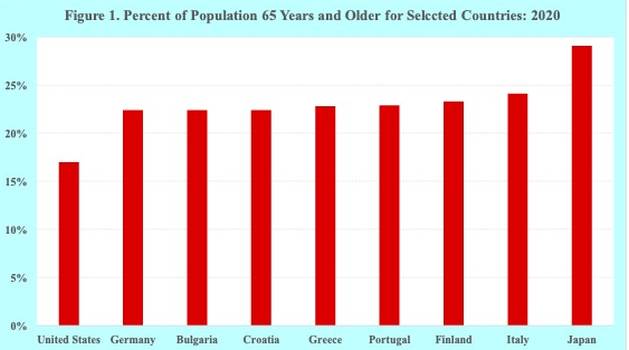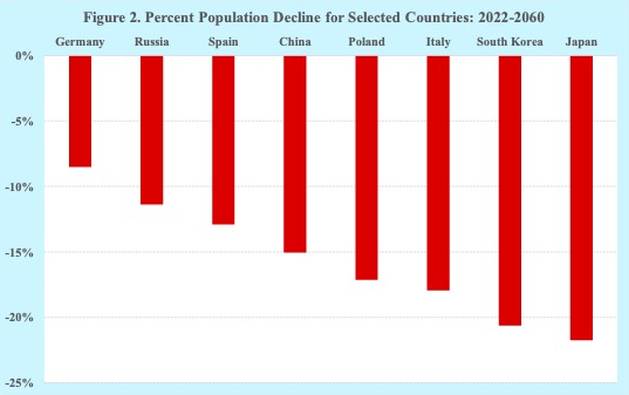Fear of Population Ageing

PORTLAND, USA, Feb 21 (IPS) - Fear of population ageing is all over the news media and in government offices of country capitals worldwide. Planet Earth is becoming “planet ageing”.
Population ageing is being described as a demographic time bomb, a humanitarian crisis, a growing burden, a national security threat, ticking towards disaster, a significant risk to global prosperity, a silver tsunami, an unprecedented set of challenges, a problem for young and old.
Government officials, business leaders, economists, healthcare providers, social organizations, political commentators and others are increasingly ringing alarm bells over the menacing demographic ageing of populations.
Adding to those alarm bells is the 2022 Japanese film, Plan 75, presented in May at the annual Cannes Film Festival. That dystopian film describes a government program that encourages senior citizens to be euthanized to remedy the burdens of an aged Japanese society.
More recently, a Yale University assistant professor of economics reportedly suggested that to address Japan’s demographic ageing, elderly Japanese people should commit “mass suicide”. After raising objections in Japan and elsewhere, he subsequently explained that his suggestion was taken out of context. He explained that his remark was intended to address a growing effort to revamp Japan’s age-based hierarchies and make room for younger generations in leadership positions in business and politics.
Mainstream media regularly reports that government expenditures on retirement and healthcare benefits for the elderly are outpacing tax revenues. Also, many governments are reportedly struggling to find the money to support retirees. Furthermore, current trends, unless they are reversed, indicate that the growing numbers of elderly people on the planet pose a challenge for governments to provide the needed care for them.
People have taken to the streets to protest government proposals to address population ageing by making changes to benefits and official retirement ages. In France people have taken to the streets to protest the government’s intention to raise the current age of 62 years to receive government benefits.
Similarly in China, retirees and their supporters are protesting government proposed cuts in benefits for the elderly. And fearing public backlash at the voting booth, elected government officials in the United States are bending over backwards in their assurances, retreating from possible program cuts, and promising that they “won’t touch” Social Security or Medicare.
The ageing of populations should not really come as a surprise to government officials and their many economic and political advisors and aides.
For decades demographers and many others have been writing articles, publishing books, giving presentations, and advising government officials and others about the demographic ageing of populations resulting from the continued decline in fertility rates and increased life expectancy.
Nevertheless, despite those considerable efforts and clear communication about population ageing, governments have not been paying enough attention.
Apparently, governments mistakenly came to believe that the demographic realities of population ageing could simply be ignored because those realities were largely academic matters as well as concerns for the distant future. In fact, however, those realities were neither largely academic nor concerns for the distant future.
Over the past half century, the median age of the world’s population has increased to 30 years in 2020 from 20 years in 1970, an increase of 10 years. Many countries have attained median ages in 2020 well above 35 years, such as France at 41 years, South Korea at 43 years, Italy at 46 years and Japan at 48 year.
In addition, many countries have seen their elderly population reach unprecedented levels. In the United States, for example, more than 1 in 6, or 17 percent, were 65 or older in 2020. That percentage is relatively low in comparison to many other developed countries. In Italy and Japan, the proportion 65 years and older is 24 and 29 percent, respectively (Figure 1).

The ageing of populations certainly poses mounting challenges for governments as well for the elderly that will require changes in national policy priorities, country institutions and social arrangements.
Among those challenges are needs for financial aid, caregiving and assistance, medical treatment, healthcare and drugs. Such needs are not only increasingly overwhelming many households, but they are also straining government resources and the capacities of institutions to provide care for the elderly.
In addition to the financial costs, governments are wrestling with major policy issues. Population ageing is competing with national priorities that require financial resources, including defense, economy, employment, education, health care, environment and climate.
Population ageing is also raising vexing questions about the proper role of government and the responsibilities of individuals for their personal wellbeing in old age. Those questions continue to roil government legislatures and heighten concerns about retirement and old age healthcare among their citizens.
Much of the public believes that the government should be primarily responsible to cover the financial costs and provide the needed care and support to the elderly, as has generally been the case over the past decades in many countries.
Others, however, contend that it is not the role of the government to be primarily responsible to provide care and support to the elderly. They argue that the elderly themselves and their families should be primarily responsible for covering the costs and providing the needed care, support and assistance for older persons.
The fear of population ageing is further complicated by population decline. Over the coming years, many countries across the globe are facing declines in the size of their populations due to below replacement fertility rates (Figure 2).

Demographic ageing coupled with population decline and increased human longevity are forcing governments to address mounting financial issues, especially retirement and healthcare benefits. Many government programs for old age benefits are facing insolvency in the near future.
Possible options to address those financial issues include reducing retirement benefits, limiting eligibility, raising the retirement age and increasing taxes. As would be expected, reducing benefits, limiting eligibility and raising retirement ages are unpopular among most of the public. While many are in favor of increased taxes to fund retirement pensions and healthcare for the elderly, businesses and investors are generally opposed to raising taxes.
The consequences of the demographic realities of population ageing are largely unavoidable and need to be addressed. Governments may continue choosing to avoid addressing those consequences. Perhaps they are hoping that if the demographic realities are ignored, they somehow will magically disappear.
Governments need to stop ringing the alarm bells about population ageing. Instead, they need to adapt to the demographic realities of population ageing. In particular, governments need to address the weighty consequences of population ageing by making the admittedly difficult but necessary policy and program decisions regarding official retirement age, pensions benefits, assistance, and healthcare.
Joseph Chamie is a consulting demographer, a former director of the United Nations Population Division and author of numerous publications on population issues, including his recent book, "Population Levels, Trends, and Differentials".
© Inter Press Service (2023) — All Rights Reserved. Original source: Inter Press Service
 Global Issues
Global Issues